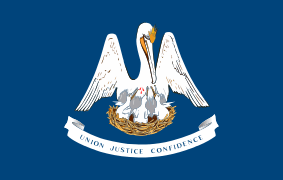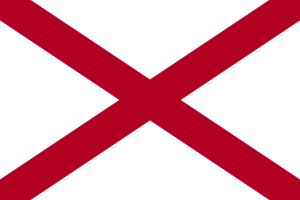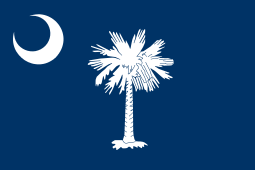Interstate 14
| |
|---|---|
| Major junctions | |
| West end: | near Fort Stockton, Texas with branches to Midland, Texas and Sonora, Texas |
| East end: | Augusta, Georgia or North Augusta, South Carolina |
| Highway system | |
Interstate 14 (I-14), also known as the "14th Amendment Highway", the Gulf-Coast Strategic Highway and the Central Texas Corridor is a proposed Interstate Highway from Texas to Georgia. The original conceptual western terminus of the highway was from Natchez, Mississippi, and later from I-49 near Alexandria, Louisiana, (since connection between Interstates is required by law), extending east through the states of Louisiana, Mississippi, and Alabama, ending at Augusta, Georgia or North Augusta, South Carolina. It is named for the 14th Amendment.[1] Advocates of the Gulf-Coast Strategic Highway proposed extending I-14 to the I-10 near Fort Stockton and the junction of US 277 and I-10 near Sonora, Texas. The proposal for 14th Amendment Highway has its origins in the Safe, Accountable, Flexible Transportation Equity Act: A Legacy for Users (SAFETEA-LU). The study and planning of I-14 has continued because of support and interest from both the Congress and the associated state highway departments. The I-14 corridor provides a national strategic link to numerous major military bases and major Gulf Coast and Atlantic ports used for overseas deployments in six states from Texas to South Carolina. The Fixing America’s Surface Transportation Act (FAST) Act, signed by President Obama on December 14, 2015, officially assigned the Future I-14 designation to the US 190 Central Texas Corridor.
History
SAFETEA-LU was signed into law by President George W. Bush on August 10, 2005; Congressional advocacy for the legislation spiked following the post-Hurricane Katrina logistics controversies.[2] The act included the 14th Amendment Highway and the 3rd Infantry Division Highway. The legislation did not provide funding for either highway. The Federal Highway Administration (FHWA) currently has no funding identified beyond the Phase II studies to support long-range planning, environmental review or construction which must be initiated at the state or regional level with any further direction from the Congress. The 14th Amendment Highway and the Gulf-Coast Strategic Highway concepts continued through active studies to the present as local and state interest began to surface and support in the Congress, FHWA and, most importantly, in the associated state highway departments, all the key ingredients necessary to successfully justify funding any proposed Federal-Aid Highway project. The FHWA issued its report on the 14th Amendment Highway to the Congress in 2011 and made recommendation for further environmental and feasibility sub-studies, however little action to fund these studies advanced in Congress after 2011. The Texas Department of Transportation (TxDOT) also conducted the US 190/IH-10 Feasibility Study in 2011, which concluded that it was justified to upgrade US 190 to a divided four-lane arterial highway based on current traffic projections to 2040, but that upgrading US 190 to a full freeway through Texas was only justified if the 14th Amendment Highway is actually constructed from Louisiana to Georgia.
The I-14 concept became a reality when House Transportation Committee members Brian Babin (R-Texas) and Blake Farenthold (R-Texas) authored and introduced the amendment to the 2015 Fixing America's Surface Transportation (FAST) Act that created the I-14 Central Texas Corridor that generally follows US 190 in Texas. Senator John Cornyn (R-Texas) sponsored the amendment in the Senate. The official Future I-14 designation[3] was approved when the FAST Act was signed into law on December 4, 2015 by President Obama.
TxDOT is moving forward with designating I-14 along US 190 from Copperas Cove to I-35 in Belton.[4] The American Association of State Highway and Transportation Officials (AASHTO) denied approval of TxDOT's request for the number at their May 24, 2016, meeting of the Special Committee on U.S. Route Numbering, their body responsible for approving designations in the United States Numbered Highway System and Interstate Highway System.[5]
See also
-
 Texas portal
Texas portal -
 Louisiana portal
Louisiana portal -
 Mississippi portal
Mississippi portal -
 Alabama portal
Alabama portal -
.svg.png) Georgia (U.S. state) portal
Georgia (U.S. state) portal -
 South Carolina portal
South Carolina portal -
 U.S. Roads portal
U.S. Roads portal - Black Belt (U.S. region)
References
- ↑ "Press Release from the office of Sen. Isakson". Retrieved November 27, 2011.
- ↑ "Gulf Coast Strategic Highway Coalition: Project Overview". Retrieved November 27, 2011.
- ↑ "Interstate 14 Designation by Congress in FAST Act". Ports-to-Plains Blog. Retrieved February 11, 2016.
- ↑ Texas Transportation Commission (April 28, 2016). "Agenda" (PDF). Texas Department of Transportation. p. 2. Retrieved May 26, 2016.
- ↑ Vitale, Marty (May 24, 2016). "Special Committee on U.S. Route Numbering" (PDF) (Report). Des Moines, IA: American Association of State Highway and Transportation Officials. Retrieved May 26, 2016.
.svg.png)